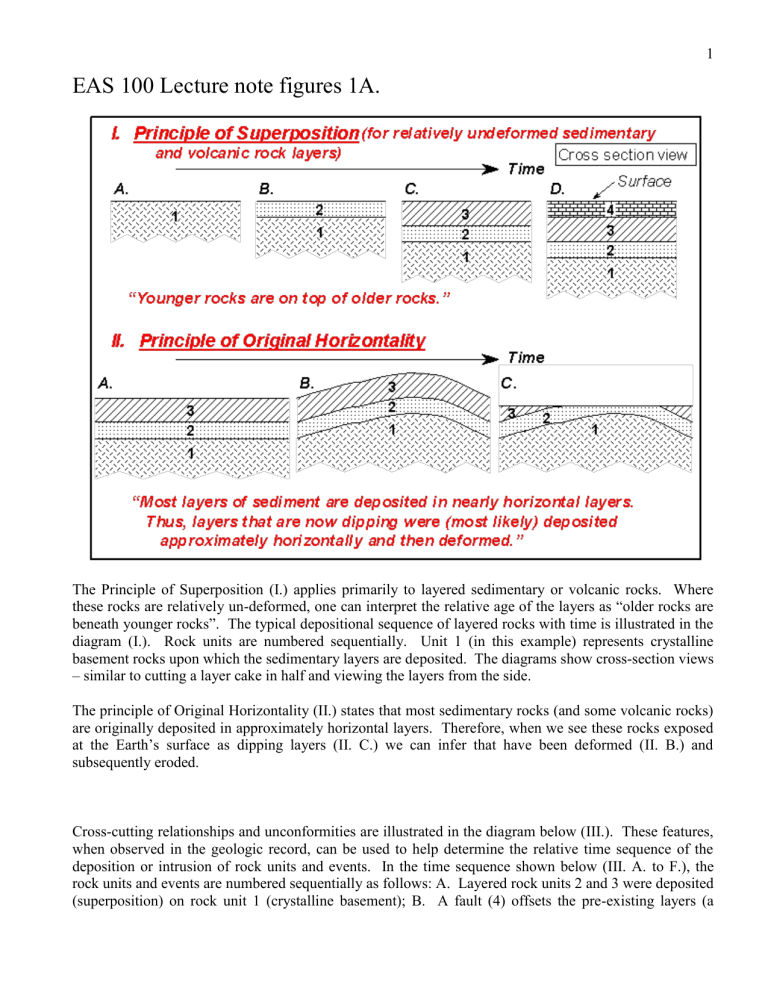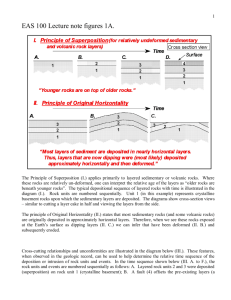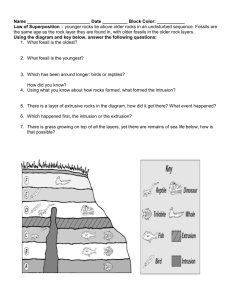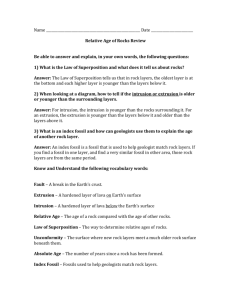Figure 1A Handout

EAS 100 Lecture note figures 1A.
1
The Principle of Superposition (I.) applies primarily to layered sedimentary or volcanic rocks. Where these rocks are relatively un-deformed, one can interpret the relative age of the layers as “older rocks are beneath younger rocks”. The typical depositional sequence of layered rocks with time is illustrated in the diagram (I.). Rock units are numbered sequentially. Unit 1 (in this example) represents crystalline basement rocks upon which the sedimentary layers are deposited. The diagrams show cross-section views
– similar to cutting a layer cake in half and viewing the layers from the side.
The principle of Original Horizontality (II.) states that most sedimentary rocks (and some volcanic rocks) are originally deposited in approximately horizontal layers. Therefore, when we see these rocks exposed at the Earth’s surface as dipping layers (II. C.) we can infer that have been deformed (II. B.) and subsequently eroded.
Cross-cutting relationships and unconformities are illustrated in the diagram below (III.). These features, when observed in the geologic record, can be used to help determine the relative time sequence of the deposition or intrusion of rock units and events. In the time sequence shown below (III. A. to F.), the rock units and events are numbered sequentially as follows: A. Layered rock units 2 and 3 were deposited
(superposition) on rock unit 1 (crystalline basement); B. A fault (4) offsets the pre-existing layers (a
2 cross-cutting relationship indicating that the fault is younger than the rock units which it offsets); C.
Erosion smoothes off the surface resulting in the removal of some of units 2 and 3, and a resulting unconformity (5) – a surface representing a period of time and the loss of some geologic record (and an additional cross-cutting relationship); D. A volcanic eruption occurs on the down-thrown side of the fault resulting in the building of a volcano on the surface and the intrusion of igneous rocks (6) into the older rock units (the intrusion is another cross-cutting unit and therefore is younger than the rock units that it intrudes); E. Further erosion again removes surface rock units (including the volcano) resulting in another unconformity (7) which cuts across rock units; F. Deposition of rock unit 8 on the unconformable surface
(7) shows that unit 8 is younger than the rock units below it (superposition) and younger than the intrusion (6) that layer 8 cross-cuts. Using superposition and cross-cutting relationships, a geologist viewing the rock record in diagram III. F. could determine the relative time sequence of all units as illustrated in stages A. to F.






